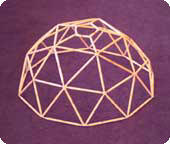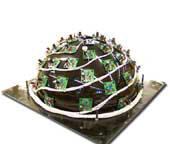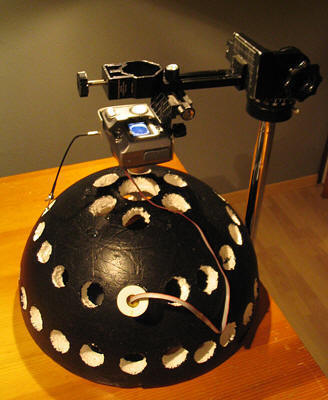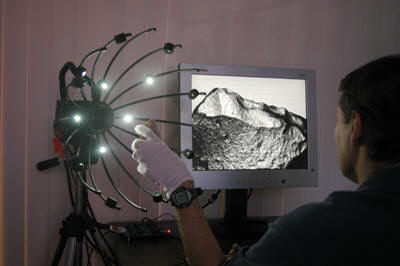|
PTMs are a
simple representation and file format that allow lighting direction
and material properties to be controlled interactively. This is
especially useful for seeing subtle shape detail on the surface of
objects. PTMs are produced from a set of images taken with varying
lighting direction. There are two general approaches to making PTMs:
1. Highlight-based
PTMs:Place one or two red or black balls (snooker balls work well) next
to the object you are photographing. Take multiple pictures of the
object and ball(s) with a digital camera set on a tripod, triggered
by a handheld flash. Move the handheld flash to various positions
keeping it at fixed distance to the object. Allow the flash to
trigger the camera, taking multiple images with different lighting
directions. Put all the images into a directory, and choose that
directory within the
HighlighPTMbuilder tool. This tool will
automatically find the ball(s) in the images, recover the light
direction and build a PTM from this dataset.
2. Manually
built a .lp (light position) file
: With a text editor that tells the
PTMfitter where the
image files and lighting directions are. You can use any number of
aids to collect the images under know lighting direction, some
methods we and others have employed are shown below.

Our original
dome was made out of hot-melt glue and wooden dowels in the shape of
a subdivided icosahedron. A tripod holds a camera looking down from
directly above and a handheld lamp is sequentially moved to each
triangular face to collect 40 images. Images were taken at night to
avoid ambient illumination.

Although
somewhat complex, this automated dome collects 50 images under
varying lighting without manual intervention. It incorporates 50
custom-made flash boards under hardware control. A digital camera
mounted on top is controlled by a laptop, where images are
immediately downloaded to after they are taken. Construction by Bill Ambrisco and Eric Montgomery.

This ‘light-arm’ was designed and constructed by Bill
Ambrisco and uses 12 commercial photographic flashes on a manually
rotated arm. A separate tripod holds the digital camera, avoiding
mechanical shake. It views the object or scene through the races
that provide the pivot for the arm. This device was used by the
National Gallery in London to collect PTMs.

This portable
device was constructed for John Yoshida at California Department
of Justice for collecting PTMs of footprints. Mike Cavallo did the
electrical design and software. The system uses flash
bulbs as the illumination source and the arm is manually rotated to
vary incident lighting direction in one axis.
 Wouter Verhesen
built this very inexpensive PTM setup in the Netherlands. A used
point-and-shoot digital camera was modified to extend the flash
unit. It is moved to various cutouts in a Styrofoam hemisphere to
vary lighting direction. Wouter Verhesen
built this very inexpensive PTM setup in the Netherlands. A used
point-and-shoot digital camera was modified to extend the flash
unit. It is moved to various cutouts in a Styrofoam hemisphere to
vary lighting direction.
 Cultural
Heritage Imaging
has built a PTM dome that allows careful control of light
source color spectra in addition to lighting direction. Light is
filtered at the illumination source and brought into the dome with
fiber optic cables. This permits elimination of unnecessary and/or
damaging light wavelengths, which makes imaging of light sensitive
materials possible. For example, the CHI dome has been used to image
fragile wax and lead seals attached with string to medieval
documents, and oil paintings. Multi-spectral imaging has also been
done using this equipment. Cultural
Heritage Imaging
has built a PTM dome that allows careful control of light
source color spectra in addition to lighting direction. Light is
filtered at the illumination source and brought into the dome with
fiber optic cables. This permits elimination of unnecessary and/or
damaging light wavelengths, which makes imaging of light sensitive
materials possible. For example, the CHI dome has been used to image
fragile wax and lead seals attached with string to medieval
documents, and oil paintings. Multi-spectral imaging has also been
done using this equipment.
 Cultural
Heritage Imaging
has acquired PTM images for using a the simple photographic assembly
shown to the left. A digital camera is fixed to provide an overhead
view of an object. The object rests on a template that directs the
photographer to place a light source at controlled position in x,y,z.
Although the acquisition sequence takes some time, it requires
minimal hardware. Cultural
Heritage Imaging
has acquired PTM images for using a the simple photographic assembly
shown to the left. A digital camera is fixed to provide an overhead
view of an object. The object rests on a template that directs the
photographer to place a light source at controlled position in x,y,z.
Although the acquisition sequence takes some time, it requires
minimal hardware.
 We
have built a real-time system that flashes 8 high intensity, white,
L.E.D.s
(Luxeon Vstars) at
500 f/second while a synchronized high speed video camera captures
frames and feeds the images to a GPU. Normals vectors are computed
at 60 f/sec
and used to display objects with
transformed reflectance functions
in real time. The EGSR paper is available
here We
have built a real-time system that flashes 8 high intensity, white,
L.E.D.s
(Luxeon Vstars) at
500 f/second while a synchronized high speed video camera captures
frames and feeds the images to a GPU. Normals vectors are computed
at 60 f/sec
and used to display objects with
transformed reflectance functions
in real time. The EGSR paper is available
here
Paul Debevec’s group
at USC has also built a series of ‘light stages’ for collecting
images and video of actors under varying lighting. |
